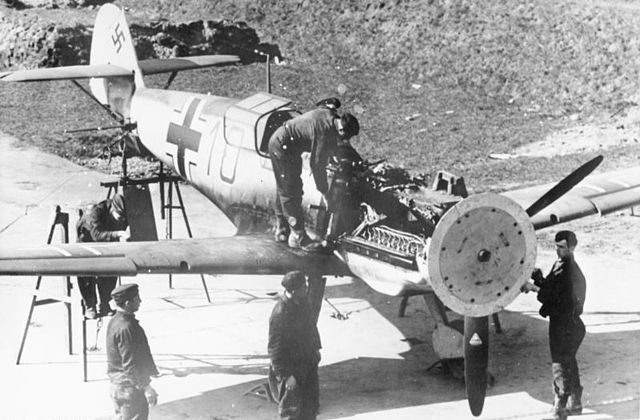A synchronization gear was a device enabling a single-engine tractor configuration aircraft to fire its forward-firing armament through the arc of its spinning propeller without bullets striking the blades. This allowed the aircraft, rather than the gun, to be aimed at the target.
The synchronization gear of a Messerschmitt Bf 109E1 is adjusted (January 1941). A wooden disk attached to the propeller is used to indicate where each round passes through the propeller arc.
Propeller of an Albatros C.III. One blade severed by a faulty or badly adjusted synchronization gear
The Fokker E.IV prototype's original "three-Spandau" armament, before the portside gun was removed. Production examples had two guns, arranged symmetrically.
Drawing from Euler's 1910 patent for a fixed forward-firing machine gun
Fokker Eindecker fighters
The Fokker Eindecker fighters were a series of German World War I monoplane single-seat fighter aircraft designed by Dutch engineer Anthony Fokker. Developed in April 1915, the first Eindecker ("Monoplane") was the first purpose-built German fighter aircraft and the first aircraft to be fitted with a synchronization gear, enabling the pilot to fire a machine gun through the arc of the propeller without striking the blades. The Eindecker gave the German Army's Air Service (then the Fliegertruppen des deutschen Kaiserreiches) a degree of air superiority from July 1915 until early 1916. This period, during which Allied aviators regarded their poorly armed aircraft as "Fokker Fodder", became known as the "Fokker Scourge".
Fokker Eindecker fighters
Fokker M. 5K
Morane-Saulnier H
A close-up photo of Otto Parschau's first Fokker monoplane, armed with a synchronized Parabellum MG14 machine gun in May 1915, which essentially became the "prototype" Fokker Eindecker.








